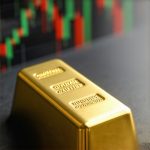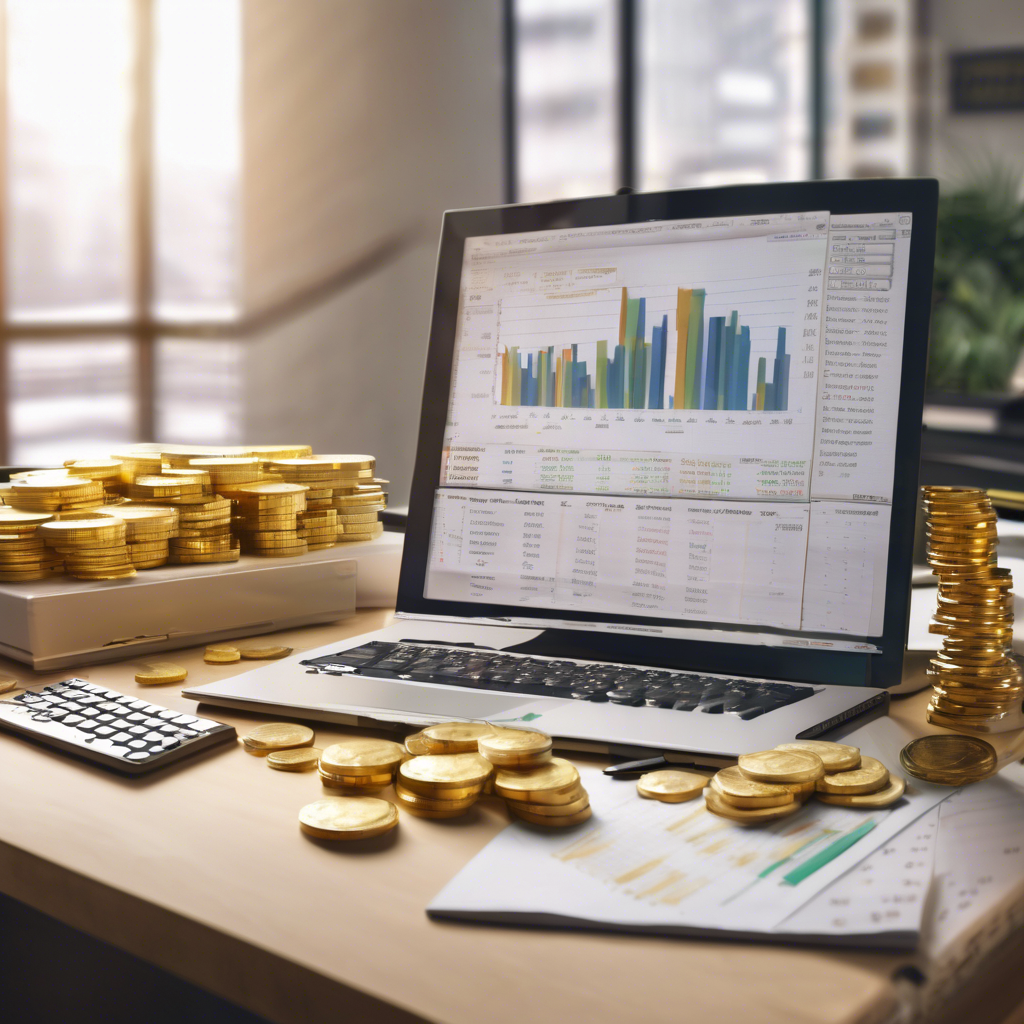Understanding Gold ETFs: A Smart Investment Choice
Gold exchange-traded funds (ETFs) have become increasingly popular among investors looking to maximize their returns while minimizing risks associated with traditional gold investments. With the volatility of the stock market and the economic uncertainties that often prompt investors to seek safe-haven assets, understanding how to approach gold ETFs effectively can be a game-changer for your investment portfolio.
What Are Gold ETFs?
Gold ETFs are investment funds that trade on stock exchanges, much like stocks. They aim to track the price of gold, allowing investors to gain exposure to the gold market without the need to physically own the metal. This investment vehicle offers liquidity, transparency, and ease of access, making it an attractive option for both novice and experienced investors.
The Benefits of Investing in Gold ETFs
Investing in gold ETFs presents several advantages, including:
- Low Expense Ratios: Gold ETFs typically have lower expense ratios compared to mutual funds, making them a cost-effective option for investors.
- Liquidity: As gold ETFs are traded on major exchanges, they can be bought and sold easily, providing investors with flexibility.
- Diversification: Gold ETFs allow for diversification within your investment portfolio, reducing overall risk.
- Transparency: With regular reporting and insights into the underlying assets, investors can stay informed about their investments.
Strategies for Maximizing Returns with Gold ETFs
To effectively maximize returns when investing in gold ETFs, consider implementing the following strategies:
- Research and Select the Right ETFs: Not all gold ETFs are created equal. Look for funds with a strong track record, low management fees, and a structure that aligns with your investment goals. For a deeper understanding of the best options available, check out our guide on understanding gold ETFs: key features and benefits.
- Monitor Market Trends: Stay updated on gold price fluctuations and market trends to make informed decisions. Our article on how to spot gold price fluctuations and trends can provide valuable insights.
- Consider Long-Term vs. Short-Term Investments: Decide whether you want to invest in gold ETFs as a long-term hedge against inflation or as a short-term trading strategy to capitalize on price volatility.
- Use Dollar-Cost Averaging: This strategy involves regularly investing a fixed amount in gold ETFs, which can help mitigate the impact of market volatility over time.
Conclusion
In conclusion, approaching gold ETFs for maximizing returns requires a blend of strategic planning and market awareness. By understanding the benefits of gold ETFs and implementing effective strategies, you can enhance your investment portfolio and navigate the complexities of the gold market with confidence. For more detailed investment strategies, explore our comprehensive guides on effective gold investment strategies for modern investors and gold investment strategies to maximize your returns in 2025.
Understanding the Gold ETF Market Dynamics
As the gold market continues to evolve, recognizing the factors that influence the performance of gold ETFs is crucial for investors. Economic indicators, geopolitical tensions, and changes in interest rates can all impact gold prices and, consequently, the value of gold ETFs. Staying informed about these market dynamics allows investors to make educated decisions regarding their gold investments.
Key Factors Influencing Gold ETF Prices
Several factors can significantly affect the prices of gold ETFs:
- Global Economic Stability: Economic downturns often drive investors towards safe-haven assets like gold, increasing demand for gold ETFs.
- Interest Rates: Lower interest rates typically lead to higher gold prices as the opportunity cost of holding non-yielding gold decreases.
- Inflation Rates: Gold is often viewed as a hedge against inflation. When inflation rises, so does interest in gold investments.
- Central Bank Policies: Central banks play a crucial role in the gold market. Their buying and selling activities can influence gold prices and thus the performance of ETFs.
Evaluating Gold ETF Performance
To effectively evaluate the performance of gold ETFs, investors should consider various metrics:
- Tracking Error: This measures how closely the ETF follows the price of gold. A lower tracking error indicates better performance.
- Expense Ratio: Investors should compare the expense ratios of different gold ETFs to ensure they are getting the best value for their investment.
- Liquidity: Assess the trading volume of the ETF to ensure you can enter and exit positions without significant price fluctuations.
Long-Term Investment vs. Short-Term Trading
When investing in gold ETFs, it is essential to define your investment horizon. Understanding whether you are looking for long-term growth or short-term gains can shape your strategy.
Long-Term Investment Strategies
For those considering a long-term investment in gold ETFs, the following strategies may be beneficial:
- Buy-and-Hold Strategy: This involves purchasing gold ETFs and holding them for an extended period, allowing investors to ride out market volatility.
- Rebalancing Your Portfolio: Regularly re-evaluating your portfolio can help maintain your desired asset allocation in response to changing market conditions.
Short-Term Trading Techniques
Short-term traders may want to adopt more active strategies, such as:
- Technical Analysis: Utilizing charts and indicators can help traders identify entry and exit points based on market trends.
- Market Timing: Keeping an eye on market news and economic reports can help traders capitalize on price movements in the short term.
Conclusion
Investing in gold ETFs can be a lucrative option when approached with the right strategies and knowledge. Understanding market dynamics, evaluating ETF performance, and defining your investment horizon are essential steps in maximizing your investment. For those interested in diversifying their portfolios, explore our comprehensive guides on effective gold investment strategies for modern investors and gold investment strategies to maximize your returns in 2025.
Choosing the Right Gold ETF for Your Portfolio
Selecting the right gold ETF is pivotal in your investment journey. With numerous options available, understanding their unique characteristics can help you align your investment objectives with the right product.
Types of Gold ETFs
Investors can choose from various types of gold ETFs, each catering to different investment goals:
- Physical Gold ETFs: These ETFs invest directly in physical gold bullion, providing a tangible asset that reflects gold’s market price. They are an excellent choice for investors seeking direct exposure to gold prices.
- Gold Mining ETFs: These funds invest in companies that mine gold. While they are indirectly related to gold prices, they can offer greater growth potential if mining companies perform well. However, they also carry higher risks associated with stock market volatility.
- Gold Futures ETFs: These ETFs invest in gold futures contracts, providing leverage and the potential for higher returns. However, they also come with increased risk due to market fluctuations.
Assessing Your Risk Tolerance
Understanding your risk tolerance is essential when investing in gold ETFs. Gold can act as a hedge against inflation, but it also comes with its own set of risks. Evaluate your financial situation and investment strategy to determine how much exposure to gold you should have in your portfolio.
Strategies for Maximizing Returns with Gold ETFs
To enhance your returns, consider implementing various strategies when investing in gold ETFs.
Dollar-Cost Averaging
This strategy involves investing a fixed amount in gold ETFs at regular intervals, regardless of the price. This approach can reduce the impact of market volatility and lower the average cost of your investment over time.
Monitoring Market Trends
Stay informed about global economic trends and geopolitical events that can influence gold prices. By understanding these factors, you can better time your investments and make informed decisions. For more insights, check out our article on how gold prices correlate to global events.
Tax Implications of Investing in Gold ETFs
Understanding the tax implications of your investments is crucial. Gold ETFs are typically treated as collectibles by the IRS, which means they may be subject to a higher capital gains tax rate. Consult with a tax professional to navigate these complexities and optimize your investment strategy.
Long-Term vs. Short-Term Capital Gains
When you hold gold ETFs for over a year, you may be eligible for long-term capital gains treatment, which generally offers lower tax rates compared to short-term gains. This distinction can significantly impact your overall returns.
Conclusion: Making Informed Gold ETF Investments
Investing in gold ETFs requires careful consideration of your financial goals, risk tolerance, and market conditions. By understanding the types of gold ETFs available, employing effective strategies, and being aware of tax implications, you can make informed decisions that align with your investment objectives. To delve deeper into gold investment strategies, explore our resources on effective gold investment strategies for modern investors and understanding gold ETFs: key features and benefits.
Factors Influencing Gold ETF Performance
Several factors can significantly impact the performance of gold ETFs. Understanding these elements is crucial for making informed investment decisions.
Global Economic Conditions
The state of the global economy often correlates with gold prices. During economic uncertainty or recession, investors tend to flock to gold as a safe haven, driving up its value. Monitoring economic indicators such as GDP growth, unemployment rates, and inflation can provide insights into potential gold price movements.
Central Bank Policies
The actions of central banks, particularly regarding interest rates and monetary policy, can influence gold prices. Lower interest rates tend to increase gold demand, as the opportunity cost of holding non-yielding assets like gold decreases. For more on how central bank purchases impact gold prices, check out our article on how central bank purchases affect gold price trends.
Gold ETFs vs. Physical Gold: Which is Better?
When considering gold investments, many investors question whether to invest in gold ETFs or physical gold. Each option has its own set of benefits and drawbacks.
Investment Liquidity
Gold ETFs offer higher liquidity compared to physical gold. ETFs can be easily bought and sold on stock exchanges, allowing for swift transactions. In contrast, selling physical gold can involve additional steps, such as appraisal and finding buyers, which may delay access to funds.
Storage and Insurance Costs
Investing in physical gold requires considerations for storage and insurance. Storing physical gold can incur costs, whereas gold ETFs eliminate these expenses as they are managed by the fund. This factor can significantly influence an investor’s choice based on their investment strategy and budget.
Best Practices for Investing in Gold ETFs
To optimize returns from gold ETFs, investors should consider implementing specific best practices.
Diversification within Gold Investments
Diversifying within the gold sector can help mitigate risk. Investing in a mix of physical gold ETFs, mining ETFs, and gold futures can balance risk and reward. This strategy allows investors to take advantage of varying performance across different segments of the gold market.
Regular Portfolio Review
Investors should conduct regular reviews of their portfolios to assess performance and make adjustments as needed. Staying informed about market trends and economic signals can guide timely decisions, ensuring your investment strategy remains aligned with your financial goals. For comprehensive insights into gold price forecasts, explore our article on effective ways to analyze gold price forecasts for 2025.
Conclusion: Navigating the Gold ETF Landscape
Understanding the dynamics of gold ETFs is essential for successful investment. By considering factors such as economic conditions, central bank policies, and the comparison of gold ETFs versus physical gold, investors can make strategic choices. Implementing best practices like diversification and regular portfolio reviews can further enhance investment outcomes. For those looking to expand their knowledge, our resources on top insights on gold price forecasts for new investors will provide valuable information.
Frequently Asked Questions about Gold ETFs
1. What are gold ETFs and how do they work?
Gold ETFs (Exchange-Traded Funds) are investment funds that track the price of gold. They trade on stock exchanges and allow investors to buy shares that represent a certain amount of physical gold, providing exposure to gold prices without the need to own the physical metal.
2. Are gold ETFs a safe investment?
While gold ETFs can provide a hedge against inflation and currency fluctuations, they are not without risks. Prices can be volatile, influenced by market demand, economic conditions, and geopolitical events. It’s important to assess your risk tolerance before investing.
3. How do I choose the best gold ETF?
When selecting a gold ETF, consider factors such as the fund’s expense ratio, liquidity, tracking error, and the amount of physical gold held by the fund. Researching these elements will help you find an ETF that aligns with your investment goals.
4. Can I invest in gold ETFs through a retirement account?
Yes, most brokerage firms allow you to hold gold ETFs in tax-advantaged accounts such as IRAs. However, ensure that your chosen ETF complies with IRS regulations regarding precious metals.
5. What are the tax implications of investing in gold ETFs?
Gains from gold ETFs are typically taxed as collectibles at a higher capital gains rate (28%) if held for more than one year. It’s advisable to consult a tax professional to understand the implications based on your individual situation.
6. How do gold ETFs respond to economic downturns?
During economic downturns, gold often serves as a safe haven asset. When market instability occurs, gold prices typically rise, which can positively impact gold ETFs. Investors often flock to gold in uncertain times, increasing demand.
7. What are the advantages of gold ETFs compared to physical gold?
Gold ETFs provide higher liquidity, ease of trading, and no storage or insurance costs compared to physical gold. They also eliminate the hassle of buying, selling, and storing gold bars or coins.
8. How can I track the performance of my gold ETF?
You can track the performance of your gold ETF through financial news websites, brokerage platforms, or apps that monitor stock prices. Look for the ETF’s NAV (Net Asset Value) and market price to assess its performance.
9. Are there any risks associated with gold ETFs?
Yes, risks include price volatility, management fees, and the potential for tracking errors. Additionally, geopolitical issues and changes in government policies can also affect gold prices and, subsequently, gold ETF performance.
10. What should I consider before investing in gold ETFs?
Before investing in gold ETFs, evaluate your investment objectives, risk tolerance, the overall economic climate, and the specific characteristics of the ETFs you are considering. It’s also beneficial to stay informed about global gold market trends.
Authority Resources for Gold ETF Investors
To further enhance your understanding and investment strategy in gold ETFs, consider the following authoritative resources:
- SPDR Gold Shares – An overview of one of the largest and most liquid gold ETFs in the market.
- IJGlobal – A platform providing detailed insights on global infrastructure and energy investments, including commodities like gold.
- World Gold Council – Offers research and insights on gold market trends, investment strategies, and demand/supply dynamics.
- Investopedia – A wealth of articles and tutorials on gold investing, including ETFs, market analysis, and strategies.
- U.S. Securities and Exchange Commission (SEC) – Information on regulations regarding ETFs and investor rights.
Conclusion: Making Informed Investment Decisions in Gold ETFs
Investing in gold ETFs offers a viable way to gain exposure to gold while providing the benefits of liquidity and ease of management. By understanding the key factors influencing performance, comparing gold ETFs with physical gold, and adhering to best practices, investors can enhance their strategy and optimize returns. Additionally, leveraging FAQs and authority resources can further bolster your investment knowledge and confidence. Gold ETFs remain a robust option for those looking to navigate the complexities of gold investment and secure their financial future.











I’ve recently taken the plunge into investing in gold ETFs after reading more about their advantages, especially the liquidity and low expense ratios compared to traditional funds. One thing that stands out for me is the discussion about diversification. It makes sense to spread out investments across different types of gold ETFs (like physical, mining, and futures) to manage risk more effectively. I opted for a mix of physical gold ETFs and a couple of mining ETFs, which I believe could balance the stability of directly holding gold with the potential growth of mining stocks.
Moreover, monitoring global economic conditions is crucial as it directly impacts gold prices. The advice on dollar-cost averaging really resonated with me too. As a novice, it feels less intimidating to commit a fixed amount regularly rather than trying to time the market. Finally, I appreciate the reminder about tax implications—talking to a tax professional has been helpful for me to understand how long-term vs. short-term gains could affect my returns. Has anyone else found particular strategies effective?
This is a comprehensive overview of gold ETFs and strategic investing approaches. I agree that diversification is key, especially investing across physical gold ETFs and mining ETFs to balance stability with growth potential. From my experience, keeping an eye on geopolitical tensions can also be very insightful because gold prices tend to react strongly during times of uncertainty. I’ve found that combining dollar-cost averaging with active monitoring of market trends helps mitigate risks and seize opportunities effectively. One area I think worth emphasizing is the importance of understanding the specific type of ETF you pick—physical, mining, or futures—as each has different risk profiles and performance characteristics. For beginners, do you recommend starting with a particular type of gold ETF to minimize risk, or is diversification always the better route? I’d love to hear others’ take on balancing these options for a new investor.